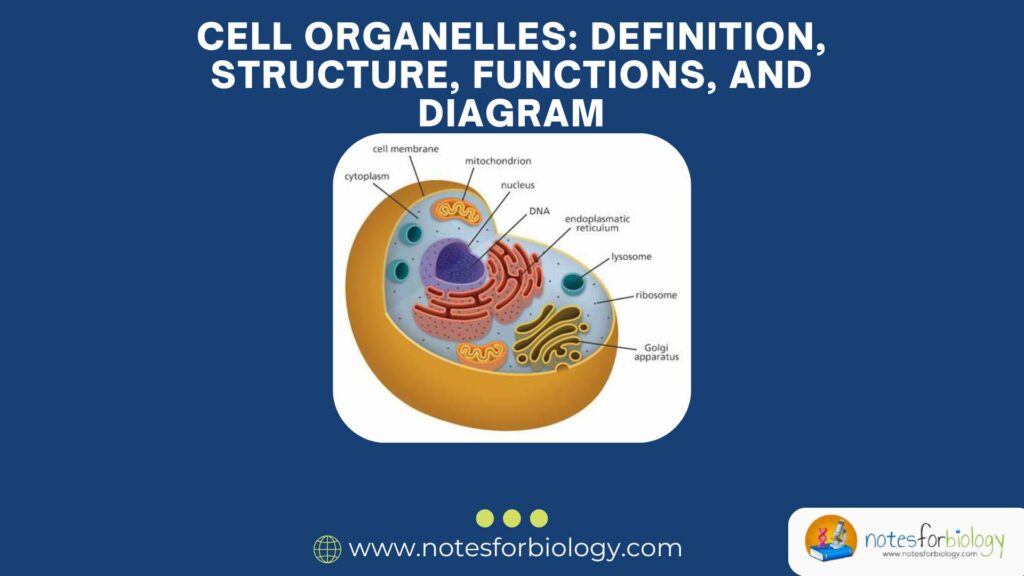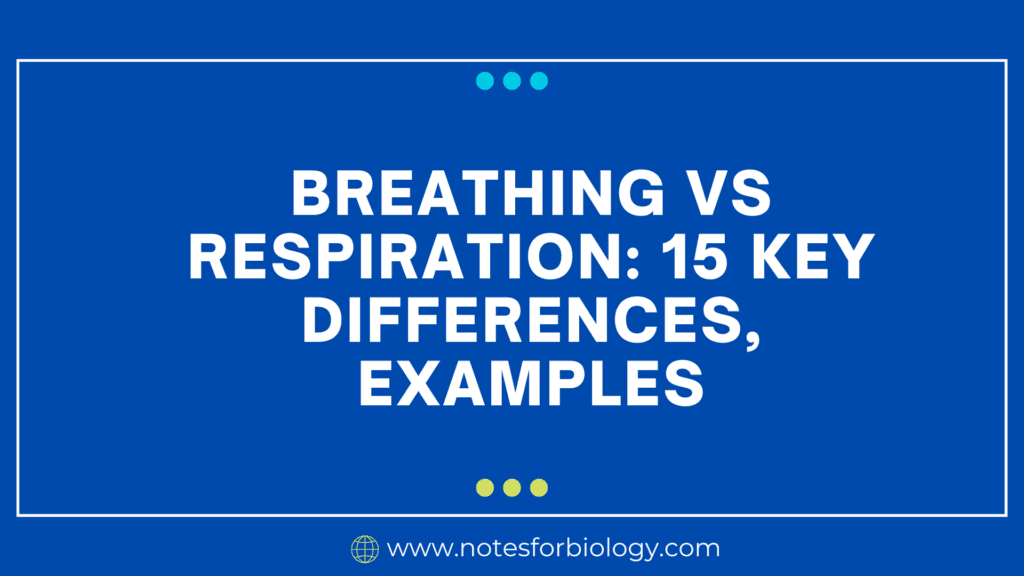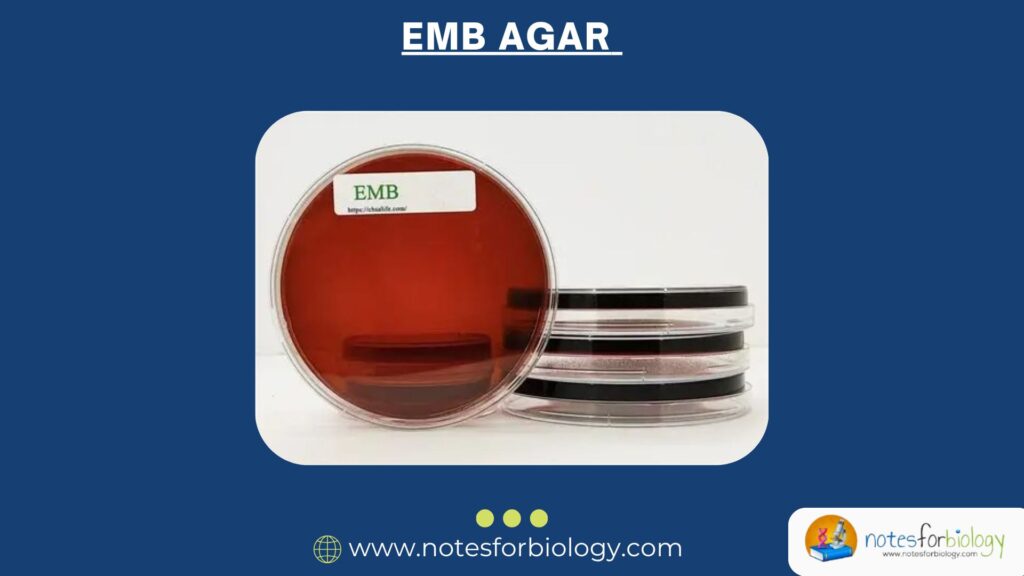1. Introduction
Cells are the basic units of life. Everything from a tiny bacterium to a complex human body is made up of cells. Inside every cell, there are many small parts called organelles. These organelles work like mini organs, each doing a specific job to keep the cell alive and working properly.
Just as a house has different rooms with different functions, a cell has different organelles with special roles. Let’s explore each organelle, its structure, what it does, and how all these parts come together to keep the cell functioning.
Table of Contents
2. What Are Cell Organelles?

Cell organelles are small structures inside cells that carry out specific tasks. The word “organelle” means “little organ.” They help the cell breathe, make energy, build proteins, remove waste, and protect the cell.
Some organelles are found in all types of cells, while others are found only in plant cells or only in animal cells.
3. Types of Cell Organelles – Their Structure and Functions
Let’s go through the main organelles one by one.
A. Nucleus – The Control Center
Structure:
- Surrounded by a double membrane called the nuclear envelope.
- Contains nucleoplasm, chromatin (DNA + proteins), and nucleolus (makes ribosomes).
Function:
- Controls all cell activities.
- Stores genetic information (DNA).
- Directs cell division and protein synthesis.
Analogy: It’s like the brain or boss of the cell.
B. Mitochondria – The Powerhouse
Structure:
- Oval-shaped with a double membrane.
- Inner membrane folded into cristae, which increases surface area.
Function:
- Produces energy (ATP) through cellular respiration.
- Breaks down sugars and fats.
- Analogy: Like a power plant providing electricity to a city.
C. Endoplasmic Reticulum (ER) – The Transport System
There are two types:
1. Rough Endoplasmic Reticulum (RER)
- Covered with ribosomes.
- Helps make and transport proteins.
2. Smooth Endoplasmic Reticulum (SER)
- No ribosomes.
- Makes lipids (fats) and detoxifies chemicals.
Analogy: Like a factory conveyor belt or delivery system.
D. Ribosomes – Protein Factories
Structure:
- Small, round particles.
- Can be free-floating or attached to RER.
Function:
Make proteins by reading genetic instructions.
Analogy: Like chefs making food (proteins) for the cell.
E. Golgi Apparatus – The Packaging Center
Structure:
- Stack of flattened, membrane-bound sacs.
Function:
- Modifies, sorts, and packages proteins and lipids.
- Ships them to their final destination.
Analogy: Like a post office or packaging warehouse.
F. Lysosomes – The Cleaning Crew
Structure:
Small, spherical organelles filled with digestive enzymes.
Function:
Breaks down waste, old cell parts, and harmful substances.
Analogy: Like garbage trucks or recycling plants.
G. Vacuoles – Storage Compartments
Structure:
- Membrane-bound sacs filled with fluid.
Function:
- Store water, nutrients, and waste.
- In plant cells, the central vacuole keeps the plant firm.
Analogy: Like a storage room or water tank.
H. Cytoskeleton – The Cell’s Framework
Structure:
Made of protein filaments: microtubules and microfilaments.
Function:
- Gives shape and support to the cell.
- Helps in cell movement and transport.
Analogy: Like beams and supports in a building.
I. Cell Membrane – The Gatekeeper
Structure:
Thin, flexible layer made of lipids and proteins.
Function:
- Protects the cell.
- Controls what enters and leaves the cell.
Analogy: Like a security guard or gate.
4. Plant Cell–Specific Organelles
Plant cells have a few extra organelles not found in animal cells.
J. Chloroplasts – The Solar Panels
Structure:
- Green, oval-shaped with stacks of thylakoids inside.
- Contains chlorophyll, the green pigment.
Function:
- Performs photosynthesis (converts sunlight into energy).
- Makes food (glucose) for the plant.
Analogy: Like solar panels collecting sunlight to make power.
K. Cell Wall – The Outer Wall
Structure:
Rigid, outermost layer made of cellulose.
Function:
- Gives shape and protection.
- Prevents the cell from bursting.
Analogy: Like a brick wall around a building.
L. Central Vacuole – The Water Tank
Structure:
Large, fluid-filled sac in the center of the plant cell.
Function:
Stores water and keeps the plant upright (turgor pressure).
Analogy: Like a central water reservoir.
5. Other Important Structures
A. Cytoplasm
- The jelly-like fluid inside the cell.
- Holds organelles in place and helps in chemical reactions.
B. Peroxisomes
Break down fatty acids and neutralize harmful substances.
6. Cell Organelle Diagram (Labelled)
Here’s a basic guide to how the organelles are arranged in a typical animal and plant cell:
Animal Cell Diagram
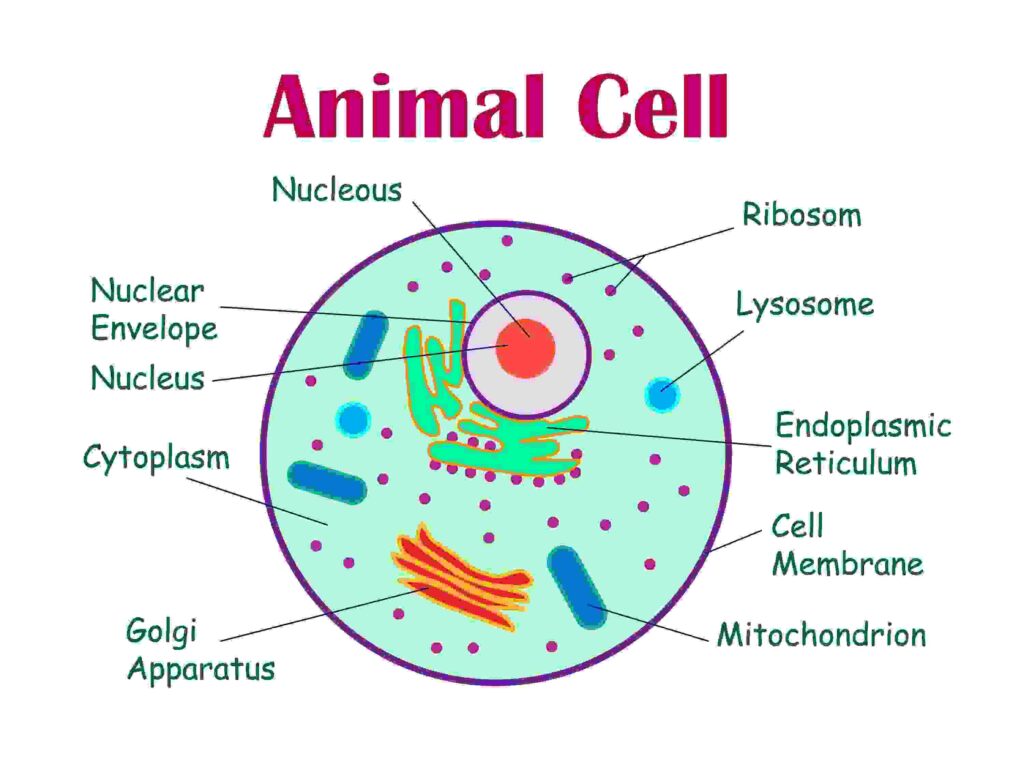
- Nucleus
- Mitochondria
- Ribosomes
- ER (Rough & Smooth)
- Golgi apparatus
- Lysosomes
- Cell membrane
- Cytoplasm
- Cytoskeleton
- Small vacuoles
Plant Cell Diagram
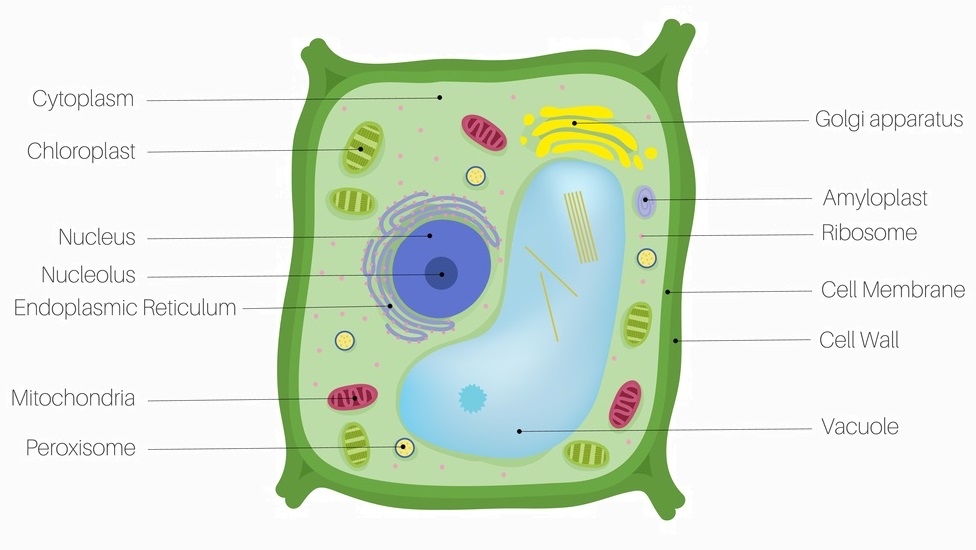
- All the above (except lysosomes and small vacuoles)
- Chloroplasts
- Central vacuole
- Cell wall
7. Differences Between Plant and Animal Cell Organelles
| Feature | Plant Cell | Animal Cell |
|---|---|---|
| Cell Wall | Present | Absent |
| Chloroplast | Present (for photosynthesis) | Absent |
| Central Vacuole | Large and central | Small or absent |
| Lysosomes | Rare or absent | Common |
| Shape | Usually rectangular | Usually round |
8. Summary Table of Organelles
| Organelle | Structure | Function |
|---|---|---|
| Nucleus | Double membrane, contains DNA | Controls cell activities |
| Mitochondria | Double membrane, inner folds | Makes energy (ATP) |
| ER (Rough) | With ribosomes | Makes proteins |
| ER (Smooth) | Without ribosomes | Makes lipids, detoxifies |
| Ribosomes | Small particles | Makes proteins |
| Golgi Apparatus | Stack of sacs | Modifies and ships proteins |
| Lysosomes | Enzyme-filled sacs | Breaks down waste |
| Vacuoles | Fluid-filled sacs | Stores materials |
| Cytoplasm | Jelly-like fluid | Holds organelles |
| Cytoskeleton | Protein fibers | Gives structure, helps movement |
| Chloroplast | Green with stacks inside | Does photosynthesis |
| Cell Wall | Rigid, made of cellulose | Gives shape and protection |
| Cell Membrane | Flexible outer layer | Controls entry and exit |
9. Importance of Cell Organelles
Cell organelles keep the cell alive and functioning properly. Each organelle does a unique job, and together, they help the cell:
- Make energy,
- Build and transport proteins,
- Get rid of waste,
- Grow and reproduce,
- Respond to signals and environments.
Without organelles, cells wouldn’t be able to survive.
10. Conclusion
Cell organelles are like workers inside the cell, each with a special role. Some help the cell make energy, others make proteins, and some store or clean up materials. Whether in a plant, animal, or single-celled organism, organelles are essential for life.
By understanding their structure and function, we get a better picture of how life works at the smallest level. It’s amazing how these tiny parts work together like a well-organized team to keep every living thing alive and functioning.
FREQUENTLY ASKED QUESTIONS
What are cell organelles?
Cell organelles are small parts inside a cell that perform specific functions. They are like mini organs of the cell, helping it survive, grow, and carry out essential tasks such as producing energy, making proteins, and removing waste.
What is the function of the nucleus in a cell?
The nucleus is the control center of the cell. It stores the genetic material (DNA) and directs all the activities of the cell, including growth, reproduction, and protein synthesis.
Which organelle is called the “powerhouse” of the cell and why?
The mitochondria are called the “powerhouse” of the cell because they produce energy (ATP) by breaking down food through a process called cellular respiration.
Related Articles

